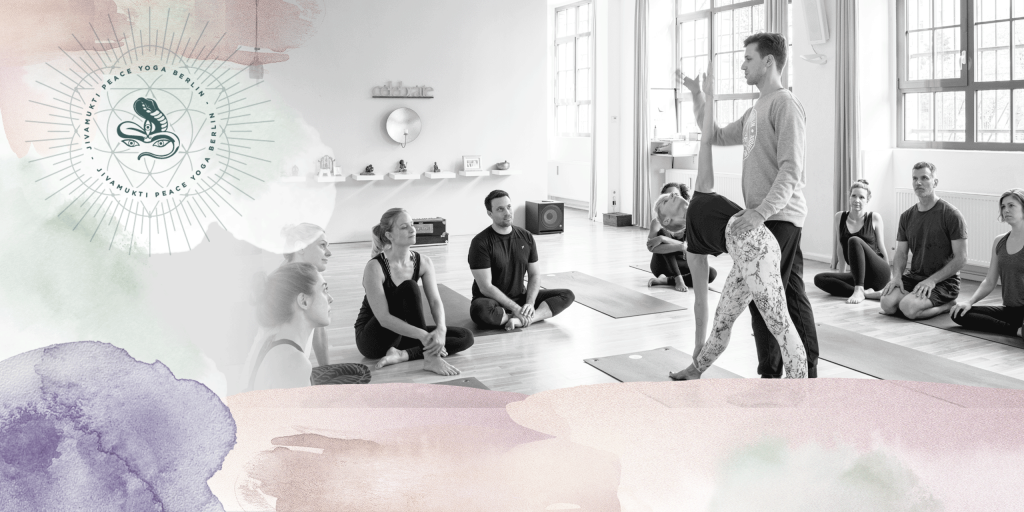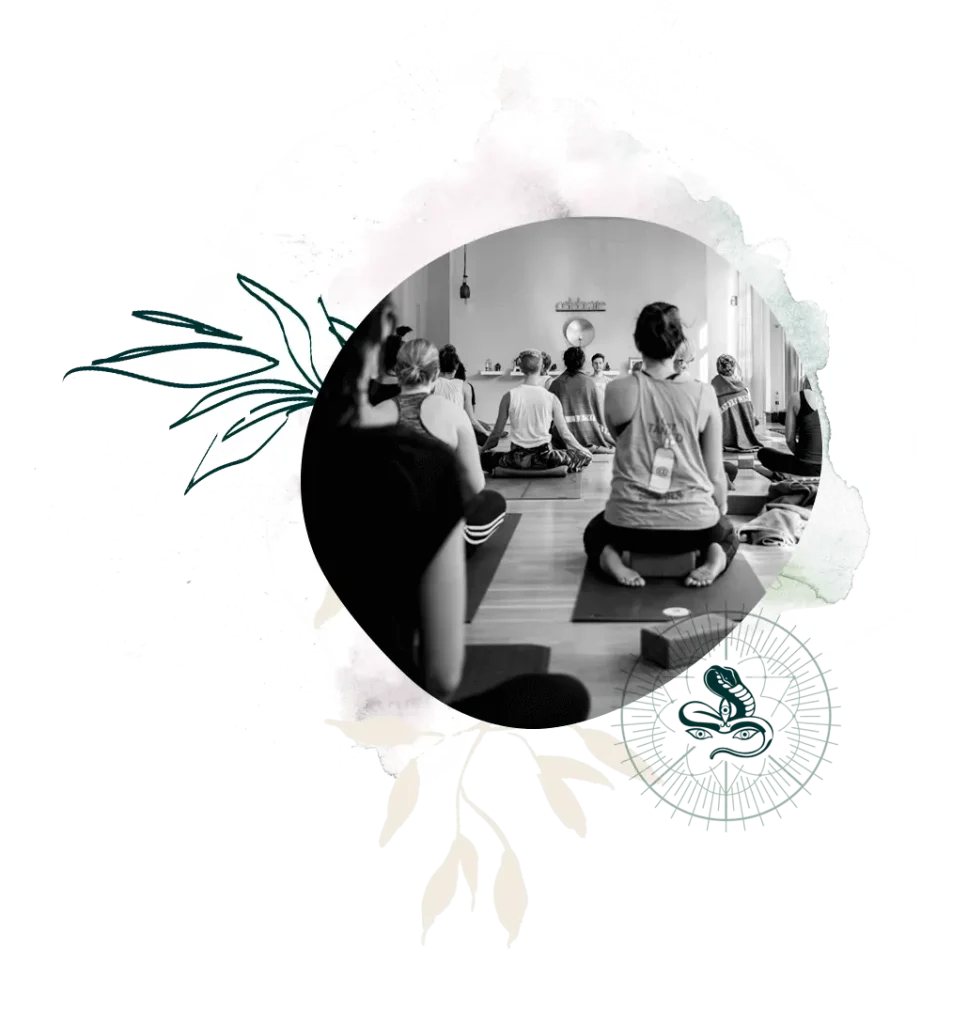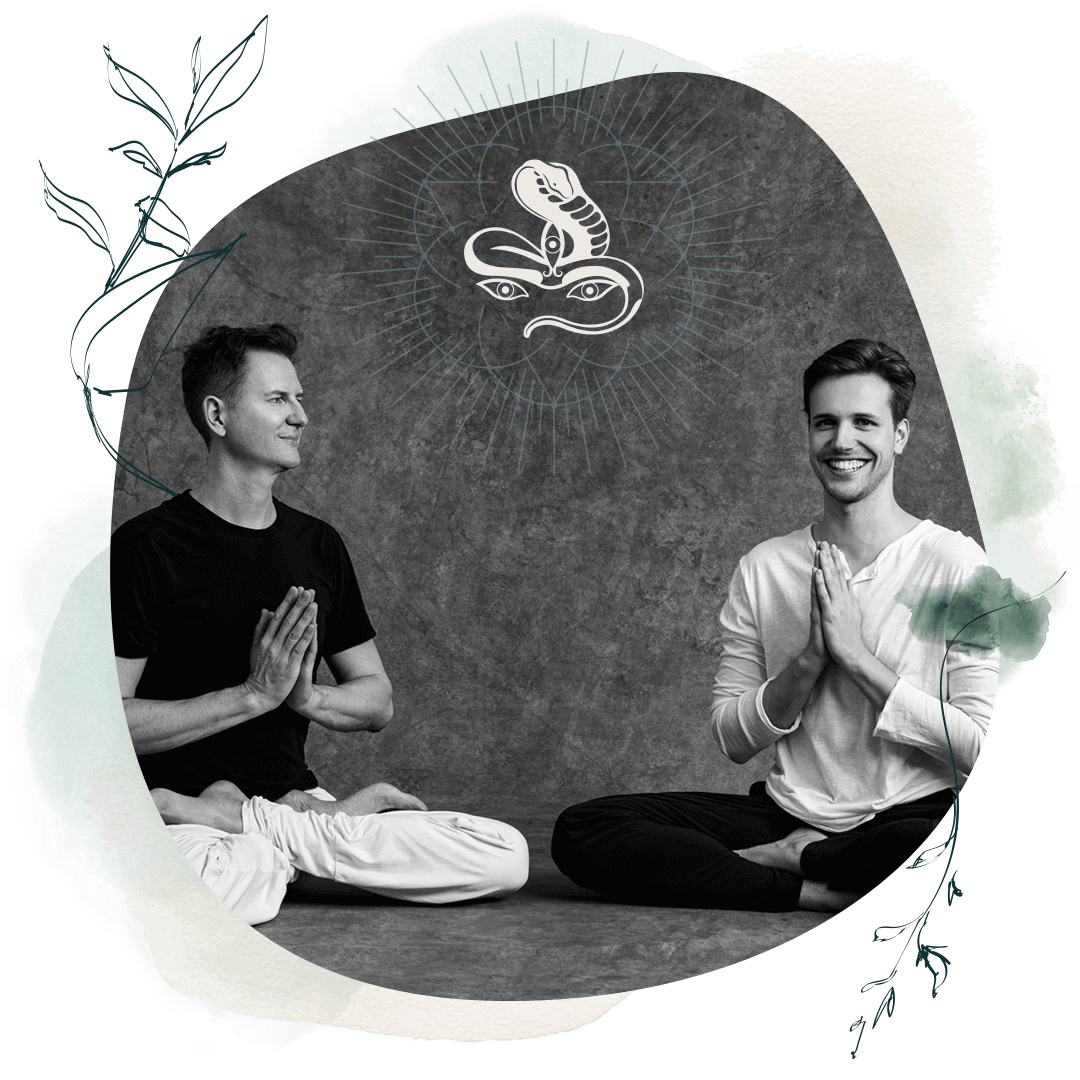
The 5 pillars of Jivamukti Yoga - And how to teach them
Authored: Moritz Ulrich | Reading time: 5 minutes | last edited: 14.10.2025
The Jivamukti yoga method is based on a clear foundation: the five pillars. Sharon Gannon and David Life, the founders of this tradition, developed them as a framework that supports teaching and practice. The five pillars are Ahimsa (non-violence), Bhakti (devotion), Shastra (study of the scriptures), Nada (sound) and Dhyana (meditation).
Each of these pillars invites us to live yoga beyond the asana practice and to embody it both on the mat and in everyday life. They form the core of every Jivamukti yoga class and give teachers valuable tools to teach yoga authentically and profoundly.
to teach.
Quintessence for you
- Five pillars as the foundation of every class: Ahimsa (non-violence), Bhakti (devotion), Shastra (study of the scriptures), Nada (sound) and Dhyana (meditation) form the heart of the Jivamukti method - they combine ethics, practice and consciousness into a holistic teaching.
- Teaching with depth and mindfulness: Jivamukti teachers integrate vegan ethics, mantra chanting, meditation, music and philosophical impulses to bring yoga to life beyond the physical level - as a path to compassion, presence and transformation.
- Practice as lived spirituality: Each pillar opens up a new dimension of mindfulness - from conscious interaction with living beings (ahimsa) to inner stillness (dhyana). In this way, teaching becomes a spiritual experience that unites the heart, mind and body.
Ahimsa - non-violence
Ahimsa is the first pillar and means causing as little suffering as possible. Non-violence is directed both outwards - how we treat other people, animals and the environment - and inwards, in our mindful treatment of ourselves.
How do we teach ahimsa?
- Through inclusive language in the classroom.
- Through a vegan lifestyle and education about ethical consumption.
- By inviting you to see your own practice as a training ground: To be compassionate without demanding perfection.
- In asana practice, by recognising our connection to the earth and to all living beings.
A classic example is the joint chanting of Lokah Samastah Sukhino BhavantuMay all beings everywhere be happy and free.

Bhakti - Devotion
Bhakti stands for devotion to the divine, the universal or simply to something greater than ourselves. It is the alignment of our practice with an intention that opens our heart.
How do we teach bhakti?
- Through kirtan and mantra chanting in class.
- Through the invitation to set an intention for practice.
- Through music that supports devotion and uplifts the spirit.
- By encouraging you to practise asanas with 100 % dedication - in the sense of your own authentic boundaries.
Bhakti adds depth to the practice and can transform any form of yoga.
Shastra - Study of the scriptures
Shastra means "scripture" or "teaching text". The study of classical scriptures such as the Yoga Sutrasthe Bhagavad Gita or other texts deepens our understanding of yoga.
How do we teach Shastra?
- Through the focus of the month, which is shared in all Jivamukti classes worldwide.
- By chanting sutras or mantras together.
- Through short readings or quotations in class.
- Through the study of Sanskrit and pronunciation.
Shastra reminds us that yoga is a millennia-old tradition that goes beyond physical exercises.
Nada - Sound
Nada means sound or vibration. Sound is more than what we hear with our ears - it is vibration that makes us feel.
with the world.
How do we teach Nada?
- Through precise verbal guidance that brings students into mindful listening.
- By chanting mantras or kirtans.
- Through the conscious use of music that supports breath, movement and emotions.
- By practising listening more closely in everyday life - to other people, to nature, to ourselves.
Nada refines our perception and opens the door to inner listening.

Dhyana - Meditation
Dhyana means meditation or concentration. It is firmly anchored in Jivamukti classes - often in a short, clear form: choose a seat, become still, focus on a mantra and let go.
How do we teach Dhyana?
- Through guided meditations at the beginning or end of a class.
- Through breathing exercises that promote concentration.
- By weaving in moments of stillness between the asanas.
Meditation makes the practice holistic and leads us to the core of yoga: the experience of oneness.

Conclusion
The five pillars - ahimsa, bhakti, shastra, nada and dhyana - form the heart of the Jivamukti Yoga Method. They give teachers a clear guide and open up a way for students to experience yoga more deeply.
Asana forms the foundation that supports the pillars and makes them tangible. The result is a class that is not just bodywork, but a transformative experience for the heart, mind and soul.
Peace Yoga Berlin invites you not only to study these five pillars, but to bring them to life in your practice, your teaching and your life.


